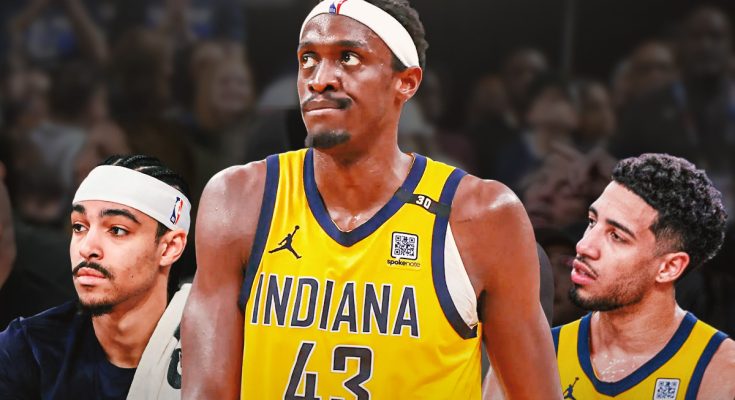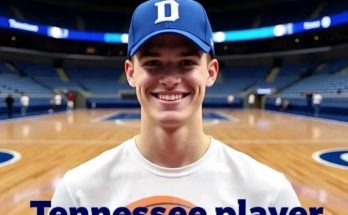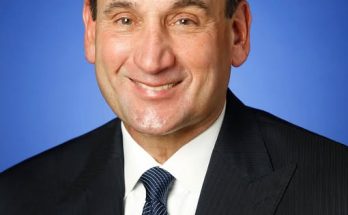The Indiana Pacers entered last season with very little fanfare or expectation. For years, they had been hovering in the middle of the Eastern Conference standings—never quite bad enough to secure a high draft pick, but not quite good enough to be taken seriously as contenders. Their roster was a patchwork of young talents, veterans past their primes, and role players, but nothing seemed to gel in a way that captured national attention. The franchise’s history was marked by flashes of promise that rarely translated into sustained success. The Pacers were, in essence, a team that had long existed in the shadows of the NBA’s elite, quietly grinding away without much spotlight.
Then, something extraordinary happened. Last season, the Pacers shocked the league, pulling off one of the most fearless and electrifying underdog runs the NBA had seen in years. It wasn’t just that they won games—they won in a style and with a spirit that redefined their identity. At the heart of this transformation was Tyrese Haliburton, a young guard who emerged as a beacon of hope and leadership for a franchise desperate for a new direction.
Haliburton’s rise was as unexpected as it was spectacular. Drafted as a promising but relatively unheralded prospect a couple of years earlier, he had quietly developed into a versatile playmaker with a unique combination of poise, vision, and scoring ability. But what truly set him apart was his leadership—an innate quality that transcended statistics. In a team filled with uncertainties, Haliburton became the steady hand, the voice of calm amid chaos, and the engine that drove the Pacers’ daring push toward respectability.
The season began with little attention paid to Indiana. Experts and analysts generally predicted the Pacers would be middle-of-the-pack at best, a team that might sneak into the playoffs as a low seed but was unlikely to make a deep run. The roster itself did not boast any big-name superstars, but rather a collection of players who, on paper, looked like solid role players or potential building blocks for the future. What the outside world failed to realize, however, was that this group had forged an unbreakable chemistry behind the scenes. They had bought into a new culture—one that prized resilience, teamwork, and a collective belief that they could upset the established hierarchy.
From the opening tip-off of the season, the Pacers played with a tenacity and fearlessness that caught many opponents off guard. Haliburton’s court vision and ability to control the game tempo were on full display. He wasn’t just scoring points; he was orchestrating the offense with a maturity beyond his years. His passes seemed to find teammates in perfect rhythm, his decision-making was impeccable, and his clutch performances in tight games earned him the respect of his peers and fans alike. In many ways, he became the symbol of Indiana’s transformation—a young leader guiding his team through uncharted territory.
The Pacers’ defense, often a weak point in previous seasons, improved dramatically. It wasn’t about having the most athletic players, but about discipline, communication, and an unwavering commitment to team principles. They switched, rotated, and pressured their opponents with an energy that spoke to their hunger. This newfound defensive identity made them a tougher matchup for some of the league’s top offenses and added another layer of credibility to their rise.
As the wins started piling up, the narrative around the Pacers began to shift. Sports media that had largely ignored them started taking notice. Analysts praised their style of play—fast-paced, unselfish, and fearless. Haliburton’s name was suddenly being mentioned in discussions about the league’s most promising young stars. Yet, what made the Pacers’ story compelling was not just the statistical improvement or the highlight reels; it was the spirit they embodied. They were the quintessential underdogs, the team nobody believed in but who refused to be dismissed.
One of the season’s defining moments came in a late January game against one of the Eastern Conference powerhouses. The Pacers were the clear underdogs, but the game quickly became a showcase for Haliburton’s leadership. With seconds ticking down and the game tied, Haliburton calmly dribbled to the top of the key, surveyed the defense, and delivered a pinpoint assist to a teammate for the winning basket. That moment encapsulated everything the Pacers had become—cool under pressure, unselfish, and confident in their ability to compete with the best.
The Pacers continued to defy expectations as the season wore on, stringing together wins against top-tier teams and refusing to back down even in tough road environments. Haliburton’s influence was evident not only in his own numbers but in the way his teammates elevated their play. Young players who had struggled in previous years found new confidence, veterans rediscovered their roles, and the bench contributed with a level of energy and hustle that made a real difference.
By mid-season, the Pacers were no longer seen as a surprise but as a legitimate playoff threat. They secured a playoff berth for the first time in several years, much to the delight of their loyal fans who had endured years of frustration. The city of Indianapolis embraced the team’s journey, filling the arena with passionate support that energized the players. Haliburton, in particular, became a hometown hero, admired not only for his on-court exploits but for his humble demeanor and work ethic.
Entering the playoffs, the Pacers were viewed as the quintessential underdogs, facing opponents loaded with star power and championship experience. But the lessons they had learned over the course of the season—resilience, teamwork, and belief—served them well. They played with a fearless energy, refusing to be intimidated by the bright lights or the storied reputations of their opponents.
In a thrilling first-round series, the Pacers battled a favored rival, pushing the games to the wire. Haliburton’s clutch performances—combining scoring, playmaking, and defensive intensity—were instrumental in several close victories. His ability to stay calm under pressure and make smart decisions allowed the Pacers to execute in critical moments, and the team’s chemistry was on full display. The series showcased Indiana’s newfound identity: a scrappy, unyielding team that refused to quit.
Though the Pacers’ run eventually came to an end, their impact was undeniable. They had rewritten expectations, proving that a team without a traditional superstar could compete through grit, intelligence, and collective effort. Haliburton emerged as a legitimate star, one who not only delivered statistically but inspired his teammates and fans alike. The lessons of that season laid a foundation for the future—a blueprint for how to build a team capable of contending through heart and smarts.
Off the court, the Pacers’ underdog story resonated beyond basketball. It was a reminder that success often comes from belief, perseverance, and unity. Their season became a narrative of hope for other teams and individuals who might not have all the advantages but are willing to work hard and embrace the challenge. The city rallied behind their team, proud of the way the Pacers represented Indiana with grit and class.
Looking ahead, the Pacers’ future seemed bright. The core, led by Haliburton, had gained invaluable experience. The organization, energized by the unexpected success, was poised to make smart moves to keep the momentum going. The season had changed perceptions—not only within the league but within the franchise itself. No longer were they merely a middle-of-the-road team hoping to make the playoffs; they had proven they could compete with anyone, and the sky was the limit.
In the end, the Indiana Pacers’ fearless underdog run was about more than just wins and losses. It was about redefining identity, embracing challenge, and finding strength in unity. It was about a young leader, Tyrese Haliburton, who embodied everything the team aspired to be—calm, intelligent, fearless, and determined. Their story was a testament to the magic of basketball and the power of belief, and it left a lasting impression on the league and its fans.
The season became a chapter in NBA history where the unexpected was celebrated, where a team that many had overlooked rose to remind the world that heart and courage could level the playing field. For the Indiana Pacers, it was the beginning of a new era—one defined not by past struggles but by the promise of what they could achieve. And at the center of it all was Tyrese Haliburton, a young star lighting the way forward for a franchise reborn.



